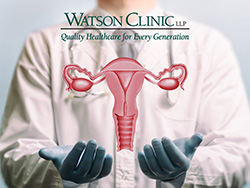
Here's something every woman should know about cervical cancer: It's almost always preventable.
Cervical cancer is rare in women who are regularly screened for it. And there's a vaccine that protects against its most common cause, the human papillomavirus (HPV).
Most cervical cancers start with precancerous changes that gradually turn into cancer. Screening can find these abnormal changes, which doctors can then treat. That stops cancer from ever developing.
Screening always includes the Pap test and, for some women, the HPV test. Both tests are simple and fast and consist of sample cells from the cervix. The Pap test looks for cell changes and abnormal cells, while the HPV test looks for the virus that causes cell changes.
Be sure to ask your doctor what the best screening schedule is for you. But in the meantime, here's what the American Cancer Society advises for most women:
• Starting at 21 and through age 29, get a Pap test every three years.
• Starting at age 30, you have a choice. Either get a Pap test every three years or get both a Pap test and an HPV test every five years.
It's OK to stop testing if you're older than 65 and have had normal Pap test results for many years. It's also OK to stop if you've had a total hysterectomy—both your uterus and cervix have been removed—for a noncancerous condition like fibroids.
There are more than 200 types of HPV. But two—both spread through sexual contact—cause roughly 70 percent of cervical cancers. The HPV vaccine targets those two types.
Even so, the vaccine can't treat an HPV infection that has already developed. That's why it's best for people to get the shot before they become sexually active. Vaccination should start at age 11 or 12 for both boys and girls, but men and women 26 and younger can still be vaccinated.
The vaccine can protect against several other cancers, including anal, throat and penile cancer.
Additional sources: American College of Obstetricians and Gynecologists; Centers for Disease Control and Prevention; National Cancer Institute; U.S. Preventive Services Task Force